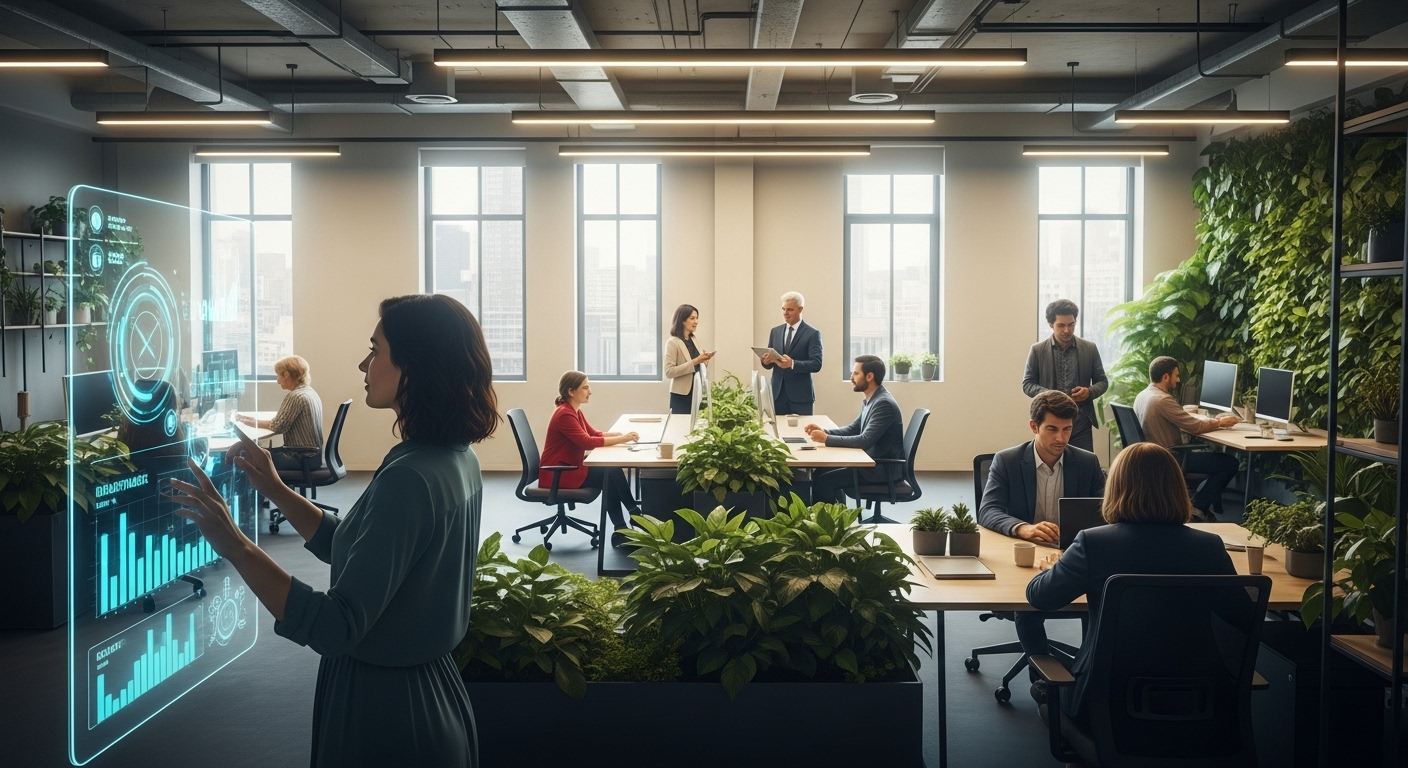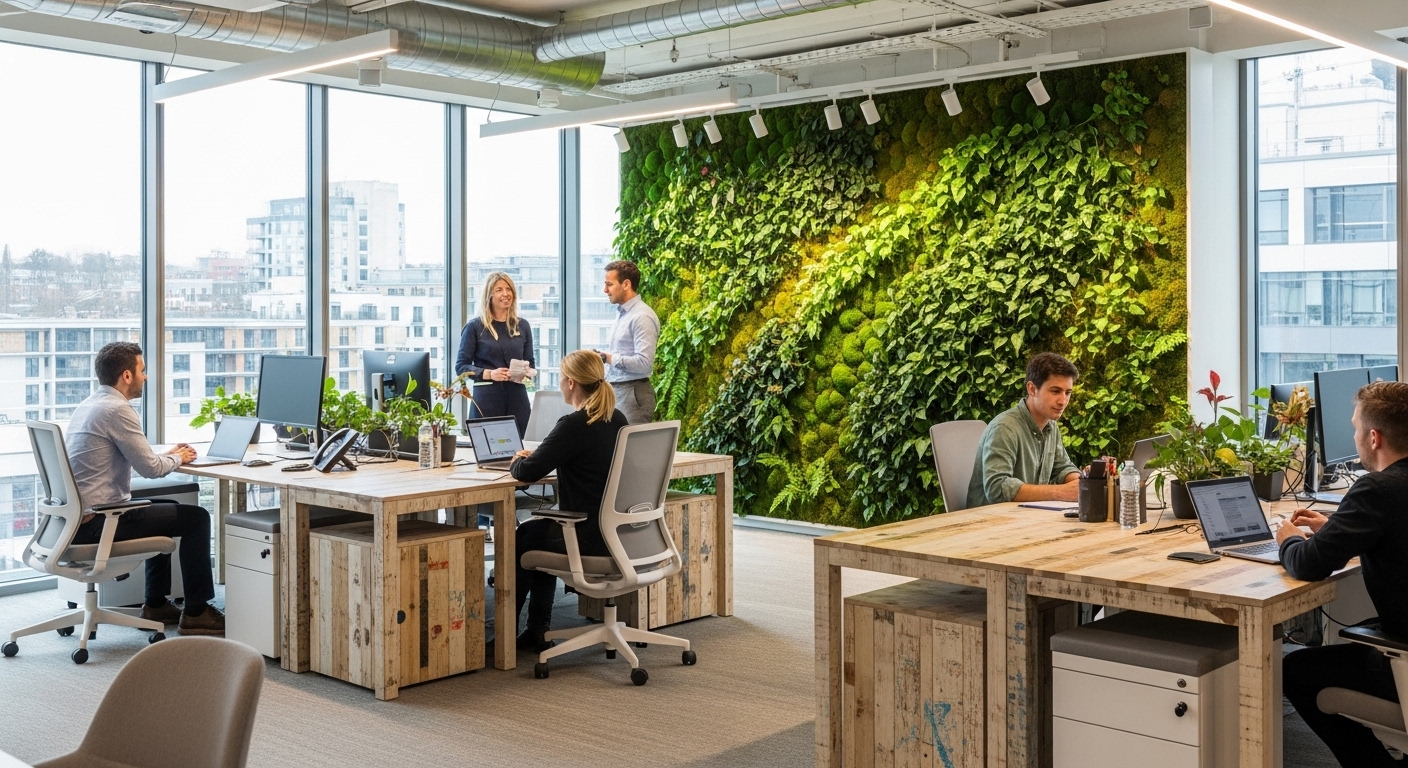In the evolving landscape of the future of work, the office is no longer just a physical location; it’s an experience. As companies navigate the complexities of hybrid models and the heightened expectations of their workforce, the focus has shifted from simply providing a desk to curating an environment that fosters productivity, collaboration, and well-being. This is the dawn of the experience-driven workplace, a sophisticated ecosystem where smart office technology is seamlessly integrated to support every facet of the employee journey. This isn’t about deploying gadgets for the sake of innovation; it’s a strategic approach to using technology to create responsive, intuitive, and human-centric spaces. By unifying disparate systems—from room booking and climate control to collaboration tools and space analytics—organizations can eliminate friction and empower employees to do their best work. This article explores how to build this integrated workplace, detailing the core technologies, the dual benefits for productivity and well-being, and the strategic roadmap for creating a truly smart and supportive office environment.
Defining the experience-driven smart office
The term ‘smart office’ often conjures images of automated lights and voice-activated assistants. However, a truly experience-driven smart office transcends these isolated features. It is a cohesive ecosystem where technology, physical space, and workplace culture converge to create a frictionless and personalized employee journey. Unlike a traditional office retrofitted with disparate smart devices, an experience-driven model is designed with the user at its center. It anticipates needs before they arise. For instance, an employee’s calendar syncs with the building’s management system, automatically booking a desk near their team members, adjusting the lighting and temperature to their pre-set preferences, and reserving a quiet room for an upcoming video call. This level of integration is the key differentiator. It moves beyond simple automation to create a holistic and responsive environment. The focus shifts from the technology itself to the outcomes it enables: reduced administrative burden, effortless collaboration between in-office and remote colleagues, and a palpable sense of being supported by one’s physical surroundings. This model relies on an Integrated Workplace Management System (IWMS) or an employee experience platform that acts as the central nervous system, connecting IoT sensors, booking applications, building controls, and communication tools into a single, intelligent network.
The dual pillars: boosting productivity and enhancing well-being
An integrated smart office strategy rests on two fundamental pillars that are intrinsically linked: enhancing employee productivity and promoting holistic well-being. On the productivity front, the benefits are tangible and immediate. Smart booking systems for desks and meeting rooms eliminate the time wasted searching for available space, a common frustration in agile and hybrid environments. Real-time occupancy data allows facilities managers to optimize floor plans, ensuring that high-demand collaborative zones are plentiful while underutilized areas can be repurposed. This data-driven approach ensures the office layout evolves with the team’s needs. Furthermore, seamless integration with collaboration technology ensures hybrid meetings are equitable. Smart cameras can automatically frame the active speaker, and high-quality audio systems make remote participants feel present, breaking down the barriers between physical and virtual attendance. Simultaneously, smart technology is a powerful tool for enhancing well-being. Environmental sensors continuously monitor air quality, CO2 levels, humidity, and temperature, automatically adjusting HVAC systems to maintain a healthy and comfortable atmosphere. Human-centric lighting systems can mimic natural daylight patterns, which is proven to boost mood and regulate circadian rhythms. The technology can also be used to create zones for different work styles, from vibrant collaborative hubs to acoustically isolated deep-work pods, giving employees control over their sensory environment and reducing stress.
Key technologies powering the modern workplace
The architecture of an experience-driven workplace is built upon a stack of interconnected technologies. At the foundation are Internet of Things (IoT) sensors. These are the digital senses of the building, collecting real-time data on occupancy, motion, air quality, light levels, and temperature. This data feeds into the brain of the system: an Integrated Workplace Management System (IWMS) or a dedicated employee experience platform. This software layer is what turns raw data into actionable insights and automated workflows. For example, it processes occupancy data to provide a real-time map of available desks, which employees can access via a mobile app. This same platform manages smart environmental controls, instructing the HVAC system to reduce energy consumption in unoccupied zones or adjusting smart lighting based on the amount of natural daylight available. Another critical component is a seamless resource booking system. This goes beyond just meeting rooms to include hot desks, parking spaces, and specialized equipment, all bookable through a single, intuitive interface. Finally, to bridge the gap in a hybrid world, advanced AV and collaboration tools are essential. This includes smart whiteboards, AI-powered cameras that provide inclusive meeting views, and room systems that integrate flawlessly with platforms like Microsoft Teams and Zoom, ensuring that collaboration is effortless regardless of location.
The integration challenge: building a cohesive tech stack
The single greatest obstacle to creating an experience-driven workplace is not a lack of technology, but a lack of integration. Many organizations accumulate smart devices and software solutions over time, resulting in a fragmented ecosystem of siloed systems that don’t communicate with one another. An employee might use one app to book a desk, another to control the room’s lighting, and a third to launch a video call. This creates complexity and friction, defeating the very purpose of the technology. Overcoming this challenge requires a strategic, platform-based approach. The first step is to prioritize solutions built on open APIs (Application Programming Interfaces), which allow different systems to share data and functionality. When selecting a core platform, such as an IWMS, it’s crucial to choose one that can serve as a central hub, capable of integrating with both existing legacy systems and future technologies. A phased implementation is often the most effective strategy. Start with a foundational element that addresses a significant pain point, such as a robust desk booking system. Once successfully deployed, layer on additional integrations like environmental controls or visitor management. This iterative approach allows the organization to learn, adapt, and demonstrate ROI at each stage, building momentum and ensuring the final ecosystem is tailored to the specific needs of its users.
Leveraging data analytics for continuous improvement
The torrent of data generated by IoT sensors in a smart office is one of its most valuable assets, but only if it’s translated into actionable intelligence. An experience-driven workplace uses analytics not just for real-time automation but for long-term strategic planning. By analyzing historical occupancy data, facilities and real estate leaders can move beyond guesswork and make informed decisions about their physical footprint. The data reveals exactly how and when different spaces are used. Are collaborative zones consistently at capacity while individual offices sit empty? Does desk usage peak on Tuesdays and Wednesdays? These insights are critical for optimizing layouts, justifying real estate costs, and planning for future needs. For example, if data shows that large conference rooms are rarely used to their full capacity, they can be subdivided into smaller, more versatile huddle spaces. This process of continuous improvement extends to the employee experience itself. By correlating environmental data with anonymized employee feedback, managers can identify how factors like air quality or noise levels impact satisfaction and perceived productivity. This feedback loop allows the workplace to become a living, evolving entity that adapts to the changing behaviors and preferences of the people within it, ensuring the investment in smart technology delivers sustained value over time.
Navigating security and privacy in the connected office
As offices become increasingly connected, they also become more vulnerable to cyber threats and raise valid concerns about employee privacy. A robust security and privacy framework is not an afterthought but a prerequisite for building trust and ensuring the successful adoption of smart office technology. From a cybersecurity perspective, every IoT sensor, smart light, and connected display is a potential entry point for malicious actors. A foundational security measure is network segmentation, which isolates IoT devices on a separate network from critical business systems, containing any potential breach. All data, both in transit and at rest, must be encrypted to protect it from unauthorized access. Regular security audits and firmware updates are essential to patch vulnerabilities as they are discovered. Equally important is addressing employee privacy. It is crucial to be transparent about what data is being collected and how it is being used. The focus should always be on collecting anonymous, aggregated data for space utilization and environmental optimization, rather than monitoring individuals. For instance, an occupancy sensor should report that a desk is occupied, not *who* is occupying it. Establishing clear, accessible data governance policies and communicating them openly with employees is key to alleviating concerns and fostering a culture of trust where technology is seen as an enabler, not an overseer.
In conclusion, the transition to an experience-driven workplace represents a fundamental evolution in how we think about the office. It’s a move away from static, one-size-fits-all environments toward dynamic, intelligent ecosystems tailored to the human experience. By strategically integrating smart technologies like IoT sensors, management platforms, and advanced collaboration tools, organizations can create spaces that not only boost efficiency but also actively support employee well-being. The core principle is integration—building a cohesive tech stack where every component works in harmony to create a seamless journey for every employee. While the path involves navigating challenges like system integration and data privacy, the rewards are immense. A workplace that anticipates needs, removes friction, and provides data-driven insights for continuous improvement becomes a powerful strategic asset. It helps attract and retain top talent, fosters a more inclusive hybrid culture, and ultimately empowers people to connect, create, and innovate. The future of the office is not just smart; it’s a thoughtful, responsive, and deeply human-centric experience.





